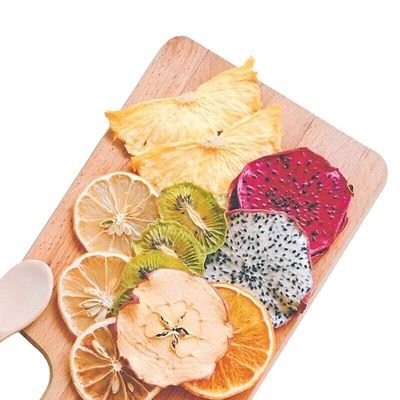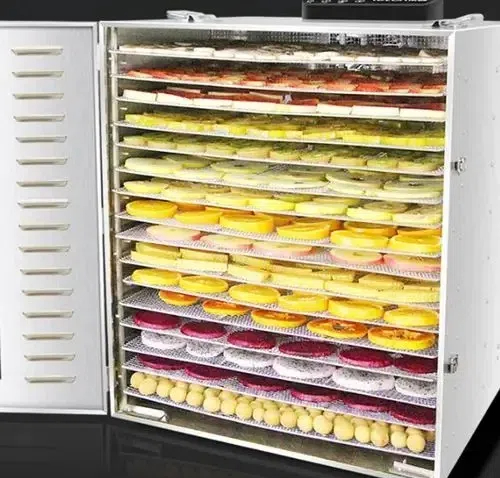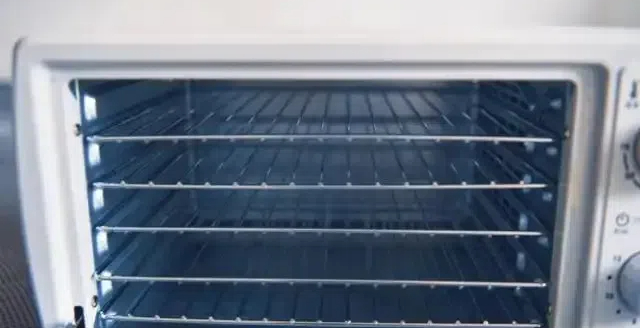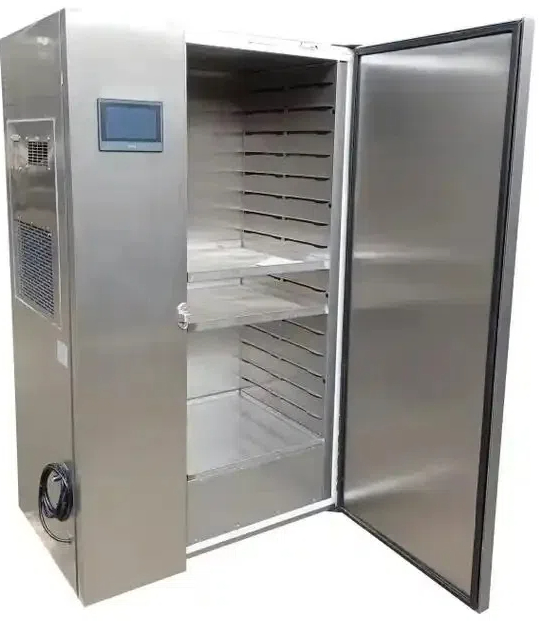
Content Menu
● Understanding Food Dryers
>> Types of Food Dryers
>> How Food Drying Works
● What is an AEG Heat Pump Dryer?
>> Key Features of AEG Heat Pump Dryers
● Benefits of Using AEG Heat Pump Dryers for Food Drying
● How Does the AEG Heat Pump Dryer Work?
● Comparing AEG Heat Pump Dryers with Traditional Food Dryers
>> Energy Consumption Comparison
>> Temperature Control
● Practical Applications of Food Drying with AEG Heat Pump Dryer
>> 1. Fruit Drying
>>> Tips for Drying Fruits:
>> 2. Vegetable Drying
>>> Tips for Drying Vegetables:
>> 3. Herb Drying
>>> Tips for Drying Herbs:
>> 4. Meat Jerky
>>> Tips for Making Jerky:
● User Experience: AEG Heat Pump Dryer Review
● Conclusion
● Related Questions
>> 1. What foods can be dried using an AEG heat pump dryer?
>> 2. How does SensiDry technology benefit food drying?
>> 3. Is it safe to dry meats in an AEG heat pump dryer?
>> 4. How long does it take to dry fruits in an AEG heat pump dryer?
>> 5. Can I use my AEG heat pump dryer for laundry as well as food?
Food dryers play a crucial role in preserving food, enhancing flavors, and extending shelf life. In recent years, the AEG heat pump dryer has gained popularity not only for laundry but also for food drying applications. This article explores the features, benefits, and comparisons of food dryers, particularly focusing on the AEG heat pump dryer.

Understanding Food Dryers
Food dryers, or dehydrators, remove moisture from food to inhibit the growth of bacteria, yeasts, and molds. By reducing moisture content, these appliances help preserve nutrients and flavor while creating a lightweight product that is easy to store.
Types of Food Dryers
1. Convection Dryers: Use fans to circulate hot air around the food.
2. Microwave Dryers: Employ microwave radiation to remove moisture.
3. Heat Pump Dryers: Utilize heat pump technology to dry food at lower temperatures efficiently.
How Food Drying Works
The process of food drying involves several key stages:
- Preparation: Fresh produce is washed, peeled (if necessary), and cut into uniform pieces to ensure even drying.
- Blanching: For some vegetables, blanching (briefly boiling) is recommended to preserve color and nutrients before drying.
- Drying: The prepared food is placed in the dryer, where moisture is gradually removed through controlled temperature and airflow.
- Cooling and Storage: Once dried, food should be cooled before being stored in airtight containers to prevent moisture reabsorption.
What is an AEG Heat Pump Dryer?
The AEG heat pump dryer is designed primarily for laundry but is also effective for drying foods. This innovative appliance uses heat pump technology to recycle hot air, making it energy-efficient while providing gentle drying at lower temperatures.
Key Features of AEG Heat Pump Dryers
- Energy Efficiency: Rated A++ for energy consumption, significantly reducing electricity bills compared to traditional dryers.
- SensiDry Technology: Monitors moisture levels and adjusts drying time accordingly, preventing over-drying and ensuring optimal results.
- Gentle Drying: Uses lower temperatures to prevent damage to delicate fabrics and foods while preserving their nutritional value.
- Multiple Programs: Offers various settings tailored for different fabrics and drying needs, including specific programs for fruits, vegetables, and herbs.
Benefits of Using AEG Heat Pump Dryers for Food Drying
1. Energy Conservation: The heat pump technology allows for substantial energy savings compared to traditional dryers. This feature not only reduces costs but also minimizes environmental impact.
2. Versatile Use: These dryers can handle a variety of foods, from fruits and vegetables to herbs and meats. This versatility makes them ideal for home cooks looking to preserve seasonal produce.
3. Preservation of Nutrients: Lower drying temperatures help retain the nutritional value of food. This means you can enjoy dried fruits and vegetables that are not only delicious but also packed with vitamins and minerals.
4. Space-Saving Design: Compact models fit easily into kitchens without taking up much space. This is particularly beneficial for those with limited kitchen real estate.

How Does the AEG Heat Pump Dryer Work?
The AEG heat pump dryer operates by extracting moisture from the food through a series of cycles:
1. Heating Air: The heat pump heats air before circulating it through the dryer.
2. Moisture Extraction: As warm air passes over the food, it absorbs moisture.
3. Condensation: The moisture-laden air is then cooled in a condenser, where water is collected in a tank.
4. Recycling Air: The dry air is reheated and recirculated back into the dryer.
This continuous cycle ensures efficient drying while maintaining a consistent temperature throughout the process.
Comparing AEG Heat Pump Dryers with Traditional Food Dryers
| Feature | AEG Heat Pump Dryer | Traditional Food Dryer |
| Energy Efficiency | High (A++) | Moderate |
| Temperature Control | Yes | Limited |
| Moisture Monitoring | Yes | No |
| Versatility | High | Medium |
| Space Requirement | Compact | Varies |
Energy Consumption Comparison
One of the most significant advantages of using an AEG heat pump dryer over traditional models is energy consumption. While conventional dryers often operate at high temperatures that consume more electricity, the heat pump dryer's ability to recycle air reduces overall energy use significantly. This efficiency translates into lower utility bills over time.
Temperature Control
Temperature control is another area where the AEG heat pump dryer excels. Traditional food dryers typically operate at fixed temperatures that may not be suitable for all types of food. In contrast, AEG's SensiDry technology allows users to set specific temperatures based on what they are drying—ensuring optimal results every time.
Practical Applications of Food Drying with AEG Heat Pump Dryer
1. Fruit Drying
Drying fruits like apples, bananas, strawberries, and mangoes enhances their sweetness and makes them convenient snacks. The low-temperature setting preserves vitamins and minerals effectively while creating delicious dried fruit that can be enjoyed year-round.
Tips for Drying Fruits:
- Slice fruits evenly for uniform drying.
- Consider soaking fruits like apples in lemon juice to prevent browning.
- Store dried fruits in airtight containers in a cool, dark place.
2. Vegetable Drying
Vegetables such as tomatoes, peppers, carrots, and zucchini can be dried to create flavorful ingredients for soups, stews, or snacks. Dried vegetables are lightweight and easy to store.
Tips for Drying Vegetables:
- Blanch vegetables before drying to maintain color and texture.
- Cut vegetables into uniform pieces for even drying.
- Experiment with seasoning before drying for added flavor.
3. Herb Drying
Herbs like basil, oregano, thyme, and rosemary maintain their aromatic properties when dried in an AEG heat pump dryer. Dried herbs can enhance the flavor of dishes throughout the year.
Tips for Drying Herbs:
- Harvest herbs early in the day when oils are most concentrated.
- Rinse herbs gently and pat dry before placing them in the dryer.
- Store dried herbs in glass jars away from light and heat.
4. Meat Jerky
Making jerky at home can be done efficiently with this dryer, ensuring that meats are dried safely while retaining their flavor. The ability to control temperature helps prevent bacterial growth during the drying process.
Tips for Making Jerky:
- Use lean cuts of meat; trim excess fat before slicing.
- Marinate meat slices overnight for enhanced flavor.
- Slice meat against the grain for tender jerky.
User Experience: AEG Heat Pump Dryer Review
Customers have praised the AEG heat pump dryer for its efficiency and ease of use:
- Quiet Operation: Users report that the dryer operates quietly, allowing for use at any time without disturbing others in the household.
- Ease of Cleaning: The water tank is easy to empty after each use, and cleaning filters is straightforward—making maintenance hassle-free.
- User-Friendly Controls: The digital display simplifies program selection with intuitive icons that guide users through various settings.
Many users have shared positive experiences regarding how well this appliance performs when used as a food dehydrator:
I've been using my AEG heat pump dryer primarily for fruits and herbs. The results have been fantastic! I love how easy it is to set up different programs based on what I'm drying."
Conclusion
The AEG heat pump dryer stands out as an excellent option for both laundry and food drying applications. Its energy efficiency, gentle drying capabilities, and versatile settings make it a valuable addition to any kitchen. Whether you are looking to preserve fruits or create homemade jerky, this appliance delivers exceptional results while being environmentally friendly.
By investing in an AEG heat pump dryer, you not only gain a reliable appliance but also contribute positively toward sustainable living practices by reducing energy consumption.

Related Questions
1. What foods can be dried using an AEG heat pump dryer?
You can dry fruits like apples and bananas; vegetables such as tomatoes and peppers; herbs like basil; and meats for jerky effectively using this dryer.
2. How does SensiDry technology benefit food drying?
SensiDry technology monitors moisture levels continuously during the drying process to prevent over-drying while conserving energy effectively.
3. Is it safe to dry meats in an AEG heat pump dryer?
Yes! As long as you follow proper guidelines regarding temperature settings (typically around 70°C) and time (usually several hours), it's safe to dry meats at home using this appliance.
4. How long does it take to dry fruits in an AEG heat pump dryer?
Drying times vary depending on the type of fruit but generally range from 6 to 12 hours based on thickness and moisture content.
5. Can I use my AEG heat pump dryer for laundry as well as food?
Yes! The appliance is designed specifically for both laundry drying tasks as well as preserving various types of foods efficiently—making it incredibly versatile!












